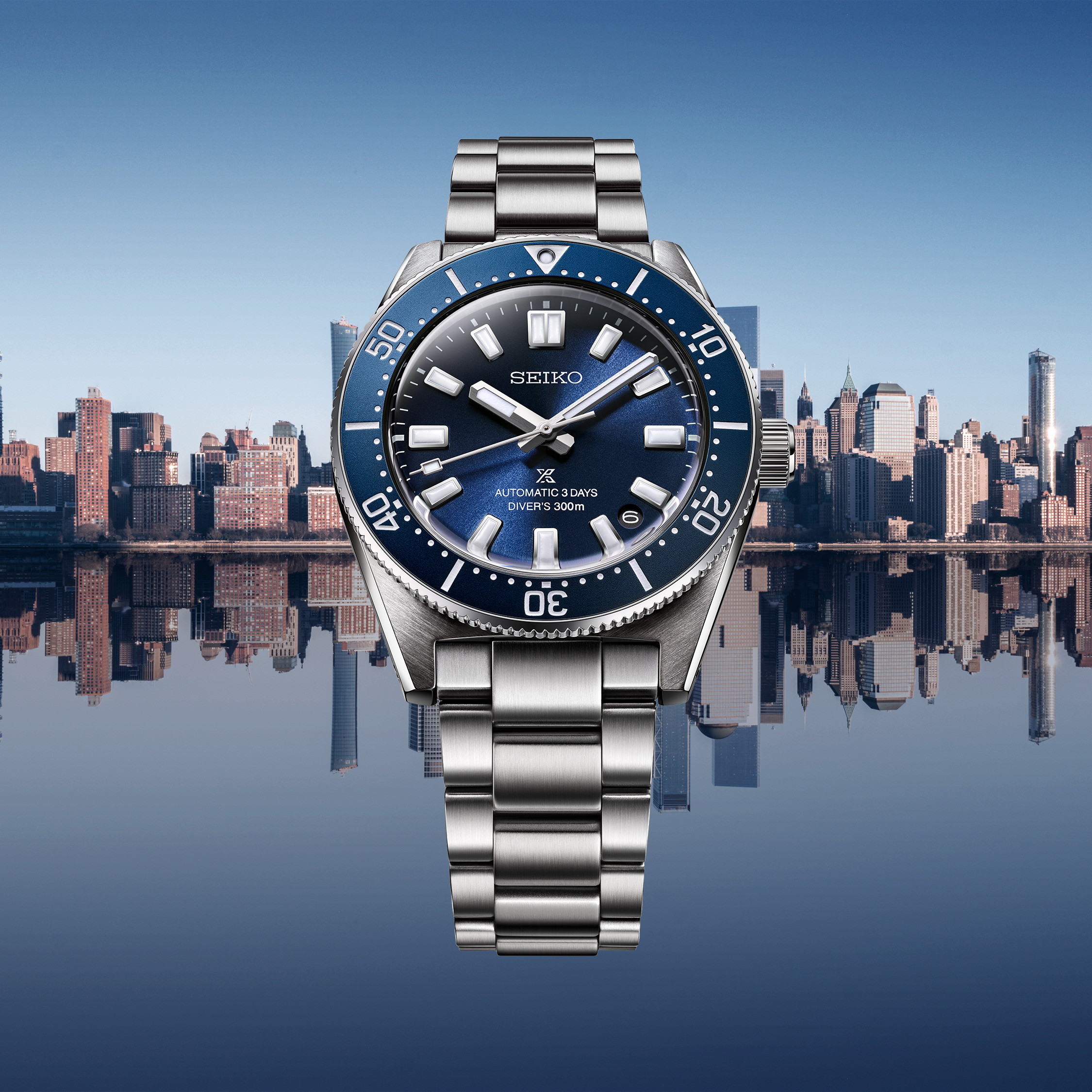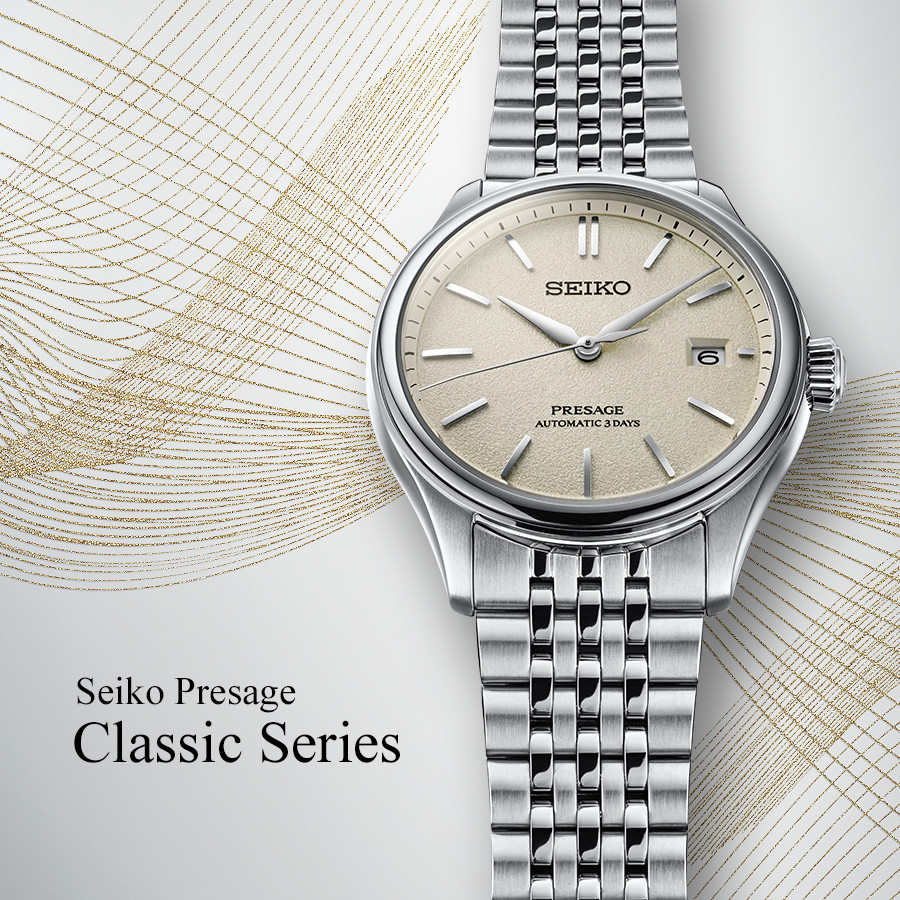Daily use
We recommend that you have your watch professionally checked every 2 to 3 years to ensure that the case, winding mechanism, gasket and glass are in good condition.
To prevent possible oxidation of the case and bracelet caused by dust, moisture or perspiration, wipe your watch regularly with a soft, dry cloth.
On watches with a calendar, when the date changes, the name of the day can appear in another language. It will soon readjust to the correct language. When setting the hours, check the date setting.
Do not change the date manually between 9 p.m. and 4 a.m. as this may cause slight damage to the mechanism.
Battery
Have your battery changed by an authorised SEIKO dealer.
It is best to have an original SEIKO battery installed.
Do not store a watch with a flat battery as this could damage the movement.
If your second hand moves in 2-second intervals, this indicates that your battery is about to run out.
It should be replaced promptly.
The more you use the additional features of your watch (light, alarm, etc.), the faster your battery will run low.
Temperatures above 60°C or 140°F may cause the battery to leak or reduce battery life.
Temperature
Do not leave your watch in temperatures below 10°C or 14°F for long periods of time as the cold may cause your watch to be slightly out of sync.
At normal temperature the lag will correct itself.
Your watch will run with a high degree of accuracy within a temperature range of 5°C to 35°C.
Temperatures above 60°C or 140°F may cause the battery to leak or reduce battery life.
Chemical products
Do not expose your watch to solvents (such as alcohol or petrol), mercury, cosmetic sprays, detergents, adhesives or paints, as they may discolour or damage the case and/or strap or other parts.
Protective film on the case back
If your watch has a protective film on the case back, be sure to remove it before using your watch as perspiration may seep through and cause oxidation of the case back.
Water resistance
Avoid showering with your watch, even if it is water resistant.
Products used may damage the seals.
It is important to check for leaks at least once a year, even if everything seems normal.
Before using your water-resistant watch in water, make sure the winder is fully pushed in.
Do not wind the watch when it is wet or in water.
If your watch has been exposed to sea water, rinse it in fresh water and dry it thoroughly.
If your watch has been immersed in hot water, a slight time difference may occur.
However, it will correct itself when the watch returns to a normal temperature.
Any impact on the glass may affect the water resistance of the watch.
Not water resistant
If the words "WATER RESISTANT" are not marked on the case back, the watch is not water resistant and care should be taken not to get it wet, as water will damage the internal mechanism.
If the watch gets wet, we recommend that you have it checked by an authorised SEIKO dealer or service centre to ensure that it has not been damaged.
Water resistant
If "WATER RESISTANT" appears on the case back and/or dial, the watch has been designed and manufactured to withstand a pressure of 3 bar (1 bar = 1 atmosphere = 1kg/force/cm2), i.e. any accidental contact with water such as splashing, rain, domestic chores, but in no case swimming or diving.
Water resistant 50m
If the words "WATER RESISTANT 50 METRES" or "WATER RESISTANT 5 BARS" appear on the case back and/or dial, the watch has been designed and manufactured to withstand a pressure of 5 bars: showering, swimming, but not diving.
Do not use the push-buttons or winding mechanism in water.
Water resistant 100m
If "WATER RESISTANT 10 BARS" is marked on the dial and/or case back, the watch is designed and manufactured to withstand a pressure of 10 bars: showering, swimming, shallow water diving ("freediving") are acceptable, but not scuba diving or professional diving.
If the watch has been exposed to sea water, rinse it with fresh water and then dry it thoroughly.
Do not use the push-buttons or winding mechanism when the watch is wet or in water.
Water resistant 150m OR 200m
If "WATER RESISTANT 150 M or 200 M" or "WATER RESISTANT 15 BARS or 20 BARS" is marked on the dial and/or case back, the watch has been designed and manufactured to withstand a pressure of 15 or 20 BARS: showering, bathing, swimming, shallow water diving ("freediving"), but not scuba diving or professional diving
If the watch has been exposed to sea water, rinse it with fresh water and then dry it thoroughly.
Do not use the push-buttons or winding mechanism when the watch is wet or in water.
Water resistant - tips
Ensure that the winding mechanism of your water-resistant watch is fully pushed in before using it in the water at 3, 10, 15 or 20 bar.
If your watch has been exposed to sea water, rinse it in fresh water and dry it thoroughly.
If your watch has been immersed in hot water, a slight time difference may occur.
This will adjust itself when the watch returns to a normal temperature.
A waterproof watch cannot retain its original qualities over time, simply because of the natural and unavoidable ageing of its materials.
Friction caused by operating the winding mechanism or push-buttons will eventually lead to the seals wearing out.
As a precautionary measure, it is important to carry out check for leaks at least once a year, even if everything seems normal.
When scuba diving, we recommend wearing a professional watch from the "DIVER'S WATCH" series ("200M DIVER" to "1000M DIVER").
IMPORTANT: The pressure reading given in bar is a testing pressure and should not be considered as the actual depth of the dive.





